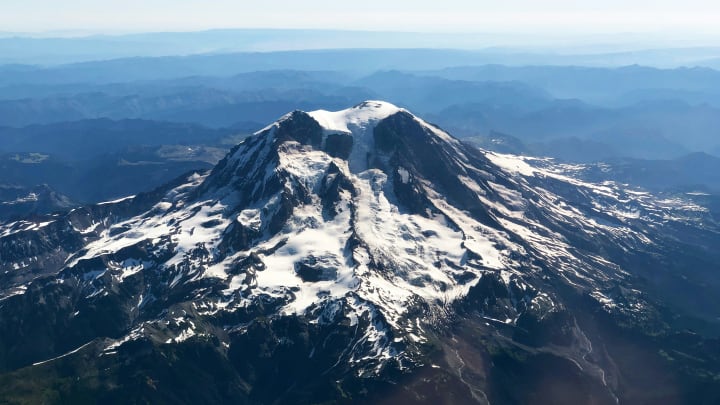Mt. Rainier: History, Origin, and Cultural Significance

A Brief History of Mt. Rainier
Mt. Rainier. This alluring mountain is an iconic landmark of the Pacific Northwest and boasts a rich history spanning millennia. At 14,411 feet, it is the highest peak in the state of Washington and has played a significant role in the cultural, geological, and environmental narratives of the region. It is the most glaciated mountain in the lower-48 US states, and attracts climbers from around the world seeking adventure and technical mountaineering experience.
Geological Origins. Formed approximately half a million years ago, Mt. Rainier is an active stratovolcano, part of the Pacific Ring of Fire. Over the eons, it has experienced numerous eruptions, shaping the topography of the surrounding region. Glaciers, which cover its vast expanse, have sculpted valleys, carving pathways through the mountain creating rivers like the Carbon and the Nisqually.
Cultural Significance. Long before European explorers set foot on the continent, Native American tribes like the Puyallup, Muckleshoot, Nisqually, and Cowlitz revered the mountain, calling it "Tahoma" or "Tacoma," meaning "mother of waters." It held spiritual significance, with legends documenting tales of its creation and power. Its towering height above the state of Washington creates the picturesque signature of the Pacific Northwest.
European Exploration and National Park Designation
The 18th century saw European explorers sailing along the Pacific Coast, and in 1792, British naval officer Captain George Vancouver named the mountain after his friend, Rear Admiral Peter Rainier. However, it wasn’t until the late 19th century that the first recorded summit was achieved by Hazard Stevens and Philemon Van Trump.
Becoming a US National Park
Recognizing its unique ecological and geological significance, the U.S. government designated Mt. Rainier as a National Park in 1899, making it the fifth national park in the country. This status not only protected its pristine landscapes but also promoted scientific research, conservation, and tourism.
Mt. Rainier Today
Today, Mt. Rainier National Park attracts over a million visitors annually. They come to hike its trails, marvel at its glaciers, and, for the ambitious, attempt a summit climb. Additionally, it serves as a vital water source and plays a role in regulating the climate of the region. Over the years, the mere presence of Mt. Rainier has inspired art, literature, and the truly adventurous. Standing 14,410 ft., its network of glaciers are exceeded in size only by Alaska's extreme mountains and glaciers. Climbing Rainier remains a true test of preparation, planning, endurance and grit. It remains an essential gateway climbing resume achievement to venture to higher, more technical climbs!
